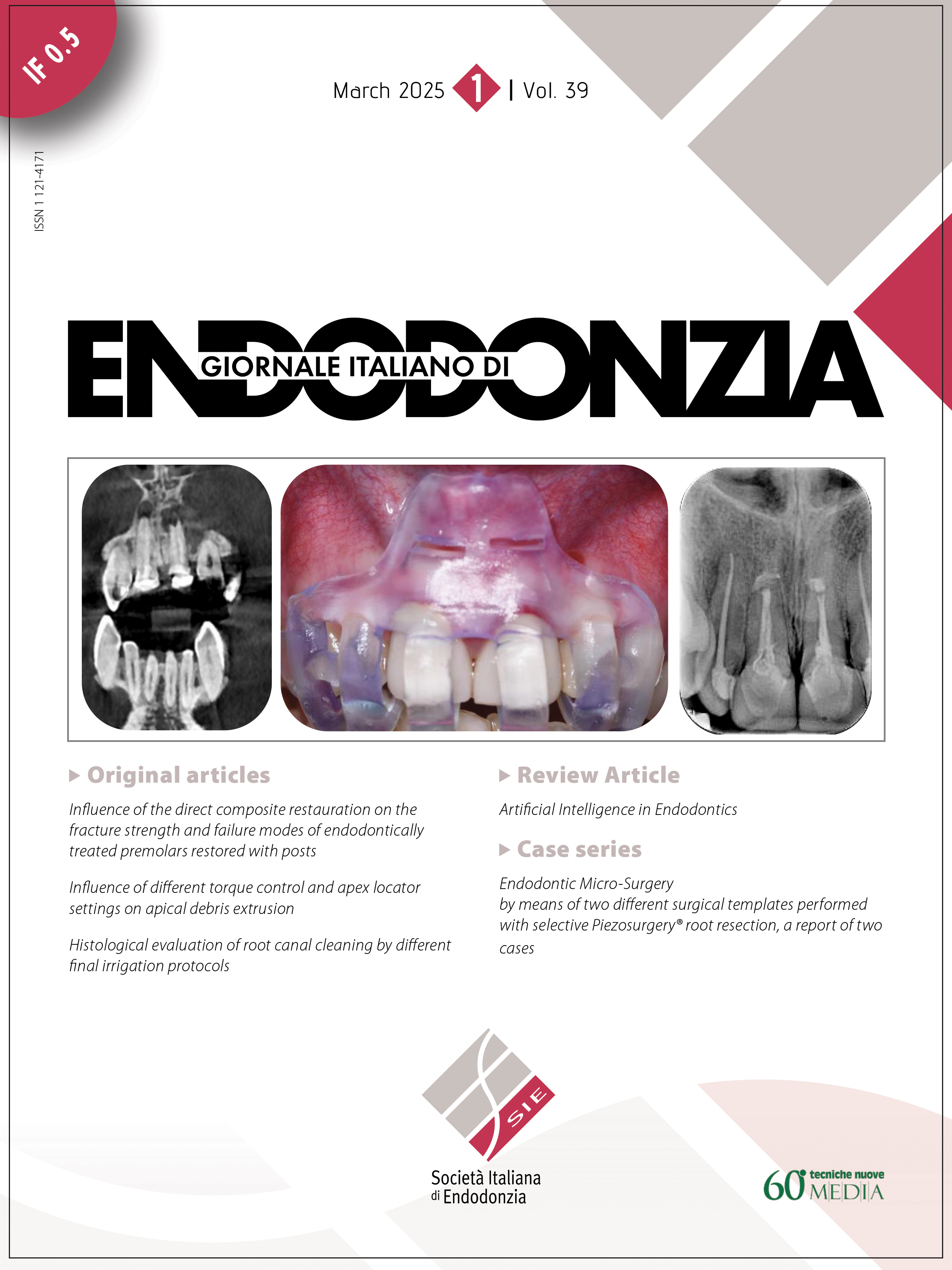Original Articles
Vol. 39 No. 1 (2025)
Influence of the direct composite restauration on the fracture strength and failure modes of endodontically treated premolars restored with posts

Publisher's note
All claims expressed in this article are solely those of the authors and do not necessarily represent those of their affiliated organizations, or those of the publisher, the editors and the reviewers. Any product that may be evaluated in this article or claim that may be made by its manufacturer is not guaranteed or endorsed by the publisher.
All claims expressed in this article are solely those of the authors and do not necessarily represent those of their affiliated organizations, or those of the publisher, the editors and the reviewers. Any product that may be evaluated in this article or claim that may be made by its manufacturer is not guaranteed or endorsed by the publisher.
Received: 20 September 2024
Accepted: 25 September 2024
Accepted: 25 September 2024
1098
Views
197
Downloads












